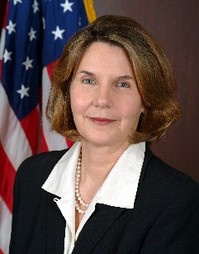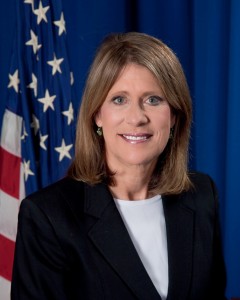
Two CPSC Commissioners explain how to improve consumer product safety regulation.
Government agencies should review their rules regularly to ensure that those rules impose the lowest reasonable burden on Americans consistent with fulfilling the agency’s statutory objectives. This principle applies to independent agencies like the U.S. Consumer Product Safety Commission as much as any agency. We were, therefore, pleased when President Obama issued Executive Order 13579, which asked independent agencies to use cost-benefit analysis and to conduct such retrospective reviews to identify and fix or repeal rules that are ineffective or too burdensome.
The Consumer Product Safety Commission (CSPC) should use this process. We regulate over 15,000 products worth billions of dollars to the American economy each year. As good regulators, it is incumbent upon us to consider the costs and benefits of the rules we adopt. Unfortunately, at the CPSC, we are barely giving a head nod to the President’s directive. Prior to the current vacancy, a majority of Commissioners affirmatively rejected using cost-benefit analysis, even for major regulations. With respect to the retrospective review process, our efforts have been focused on minor fixes that are not in the spirit of the Executive Order.
As directed by the Executive Order, the agency developed a draft review plan and in October 2011 put that plan out for public comment. In April, staff gave the Commission a draft review plan. Commission consideration has been repeatedly delayed. It does not appear that the draft plan adequately focuses on identifying and addressing the most important rules that need to be examined. Instead, it focuses on rules that qualify as “minor housekeeping,” at best. Here is what we have done so far:
- Toy cap guns. This past June, the CPSC proposed to repeal toy cap gun regulations. However, this action would repeal a regulation that had been subsumed by another regulation which went into effect in 2009. Other than cleaning up the Code of Federal Regulations, we question what effect this action has.
- Animal testing. Our other response has been to propose updating and codifying our animal testing policy to say again something we have already said—that animal testing should not be used where it is not necessary.
Both of these proposals fall into the “housekeeping” category, not the kind of review envisioned by the Executive Order. Yet these are our only responses to the Executive Order so far.
Here are some rules that deserve greater attention:
- Bicycles. The bicycle safety regulations were written many years ago and are so out of date that modern adult bicycles do not, and cannot, comply with the regulation. Yet these regulations remain on the books, unchanged.
- Fireworks. The fireworks safety regulations were most recently updated in the 1980s. To determine if a firework is overloaded with explosives, someone has to listen to how loud its explosion is. If it sounds too loud, it fails. The only testing equipment is our tester’s ear. This subjective test should be replaced with an objective one that can be replicated in the field. This rule languishes, yet with more than 9,000 injuries every year, we should find some time to work on this issue more effectively.
- Mattresses. We have two safety standards dealing with mattress flammability issues, put in place at different times. One standard deals with smolder hazard from cigarettes and the other standard deals with small open flame hazard from candles, lighters, and similar small flame sources. Two standards means two different sets of tests and two sets of testing costs. One flammability standard for mattresses could reduce costs and testing burdens while preserving a high level of safety.
These are just three examples of significant rules that warrant review but are not contemplated by our plan. We could provide others. However, the best example of a rule that should be thoroughly reviewed deals with the testing and certification required by the 2008 Consumer Product Safety Improvement Act. The rule, which passed by a three-to-two vote, imposes enormous burdens and costs on the global supply chain but was adopted with no cost-benefit analysis. A request for such an analysis of this rule was specifically rejected by the majority. The rule is so burdensome that Congress had to intervene and directly told us to review ways to reduce the costs associated with this rule. We expect to see staff recommendations for reducing the cost burdens of this rule before the end of the summer. However, had the Commission done the hard work of honestly analyzing ways to reduce costs and enhance the benefits of this rule, congressional intervention would not have been necessary. Even our staff’s recommendation that the cost reduction analysis be done before the finalization of the testing rule was overridden by the majority.
In summary, the CPSC and other independent agencies need to perform cost-benefit analysis when drafting rules and retrospectively review existing rules as much as other government agencies. The President’s Executive Order directing them to do so was welcome, but we fear that the CPSC’s retrospective review activities will focus on minor revisions instead of the major review that would be in the spirit of the order. We should not mistake tinkering edits for substantial fixes. The Commission’s plan should be an “ambitious and unprecedentedly open process for streamlining, improving, and eliminating regulations,” to use the words of Cass Sunstein, director of the President’s Office of Information and Regulatory Affairs. The end of this process should be a regulatory regime that protects the public’s health and safety while ensuring that American consumers, employers, manufacturers, and innovators face the lowest reasonable burden.
This post on The Regulatory Review draws on a statement they issued to the Subcommittee on Courts, Commercial and Administrative Law of the House Judiciary Committee for a hearing this month entitled “Clearing the Way for Jobs and Growth: Retrospective Review to Reduce Red Tape and Regulations.”





